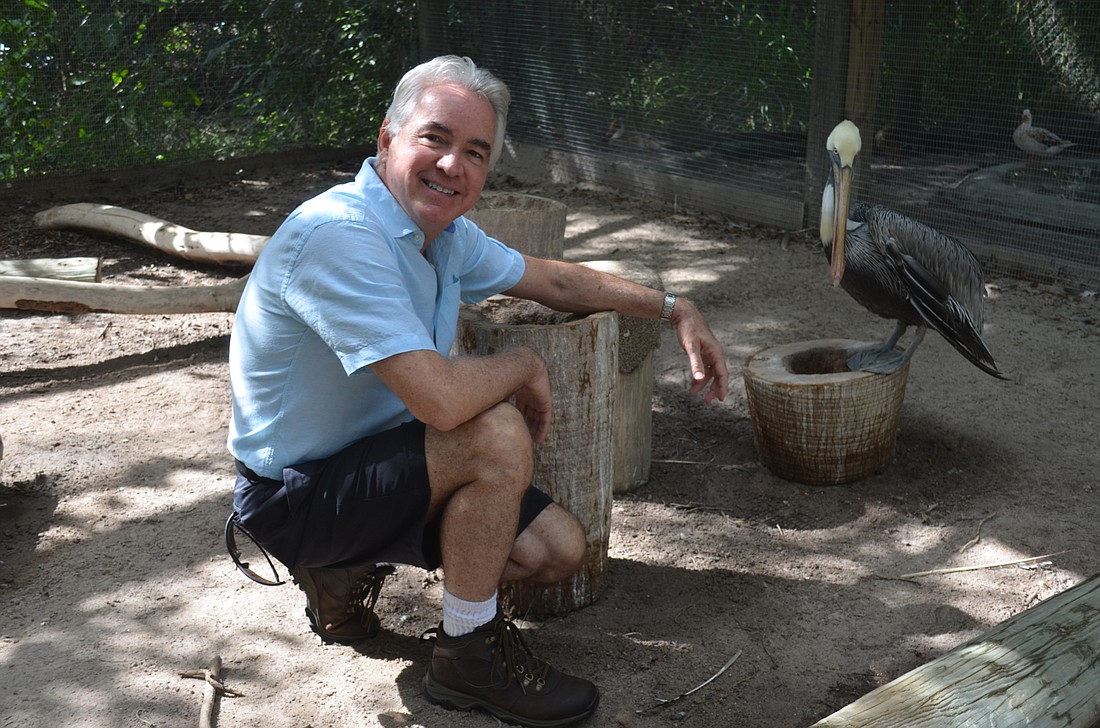- April 17, 2024
-
-
Loading

Loading

When David Pilston began his time as CEO of Save Our Seabirds in 2012, the center was rundown and just months from shutting its doors. Now, the sanctuary sees 25,000 visitors, cares for 2,500 sick and injured birds each year and has become a model for other nonprofits throughout the state.
How did you become involved with Save Our Seabirds?
I went to Riverview High School in Sarasota. I got my MBA at Stanford University and was in Silicone Valley, working with start-ups. I moved back to Sarasota in 2003, and for a number of years, I was on the boards and doing volunteer work for various organizations. I’m a big environmentalist, and I wanted to roll up my sleeves and do something substantial. I found Save Our Seabirds.
How has Save Our Seabirds improved since you became CEO three years ago?
When I got here, this place was falling apart. The roof was leaking, the air conditioning wasn’t working and there was termite damage in the wood. We’ve fixed all that and added the bright colors. Our hospital looks great now, too. The business process was nonexistent before. There was no database for any of the workers, volunteers or birds. Now, we have a database that’s become a model for other facilities. The FWC comes out and praises our model.
What factors go into determining a bird can’t be released?
Sometimes, we get an invasive bird that can’t be released. They take over natural species, and they’re not supposed to be here. Also, if one gets injured too badly, whether it’s a wing injury or an eye injury. A lot of birds of predator get eye injuries, and you can’t hunt with one eye.
What are common bird injuries you see?
The most common is fishing hook and line entanglement and nasty impacts from automobiles. What we’ve been seeing a lot is poisoned birds, and we don’t know what they’re being poisoned from. It could be botulism, red tides, pesticides or fertilizer. Also, if you go watch a seagull on the beach, anything that looks like food, they’ll pick up. They spit it out most of the time, but sometimes they do swallow it. Ninety percent of all seabirds worldwide have plastics in their bellies.
What’s the worst injury you’ve seen?
One of the worst ones was a snail kite that was found on Siesta Key Beach, which is weird because usually they’re only found in swampy areas. It was beaten up by a bunch of crows. These guys are pretty endangered and only eat a specific kind of snails, apple snails. Someone brought it in, and we revived it and were able to release it.
Do you have a favorite bird at the center?
Don’t tell the others, but I like Gabby. She was surrendered about four years ago, and she sings “Happy Birthday” all the way through, ending with a “Yay.” She’s a character.
What events does Save Our Seabirds have coming up?
On Nov. 21, we have our third Arias in Flight. We also have our main fundraiser, the Sunset Soiree on March 10 this year. New this year is something we’re really excited about. It’s called Run for the Birds with the Baltimore Orioles. It will be Dec. 12. There will be a 5K and a mile fun run that ends by crossing the home plate of Ed Smith Stadium. It will be a sustainable event with music, food and vendors. You get to cross home plate to a crowd in a major league stadium. We’re expecting this to become an even bigger fundraiser than the Sunset Soiree.
Tell me about the Save Our Seabirds wine.
They’re made in Chile and they’re 100% organic and fair trade certified. We started them about two years ago. They’re $19.99, and people can order online. It doesn’t raise a whole lot of money, but they’re a fun thing to talk about.
What goals do you have for Save Our Seabirds?
We’re trying to build sustainable funding to keep us running. We have no endowments and just one major sponsor. The community has been very generous in providing things and equipment for us, but we do need the money. We use 18 tons of fish a year and 100 different kinds of food every day.
What can people do if they see a bird in need?
If it’s a healthy bird, look but don’t touch. Interacting with people is what gets the bird in trouble in the first place. If it’s injured, call us. We can send out a rescuer, or if it’s faster, we can walk you through the process and you can bring it in.